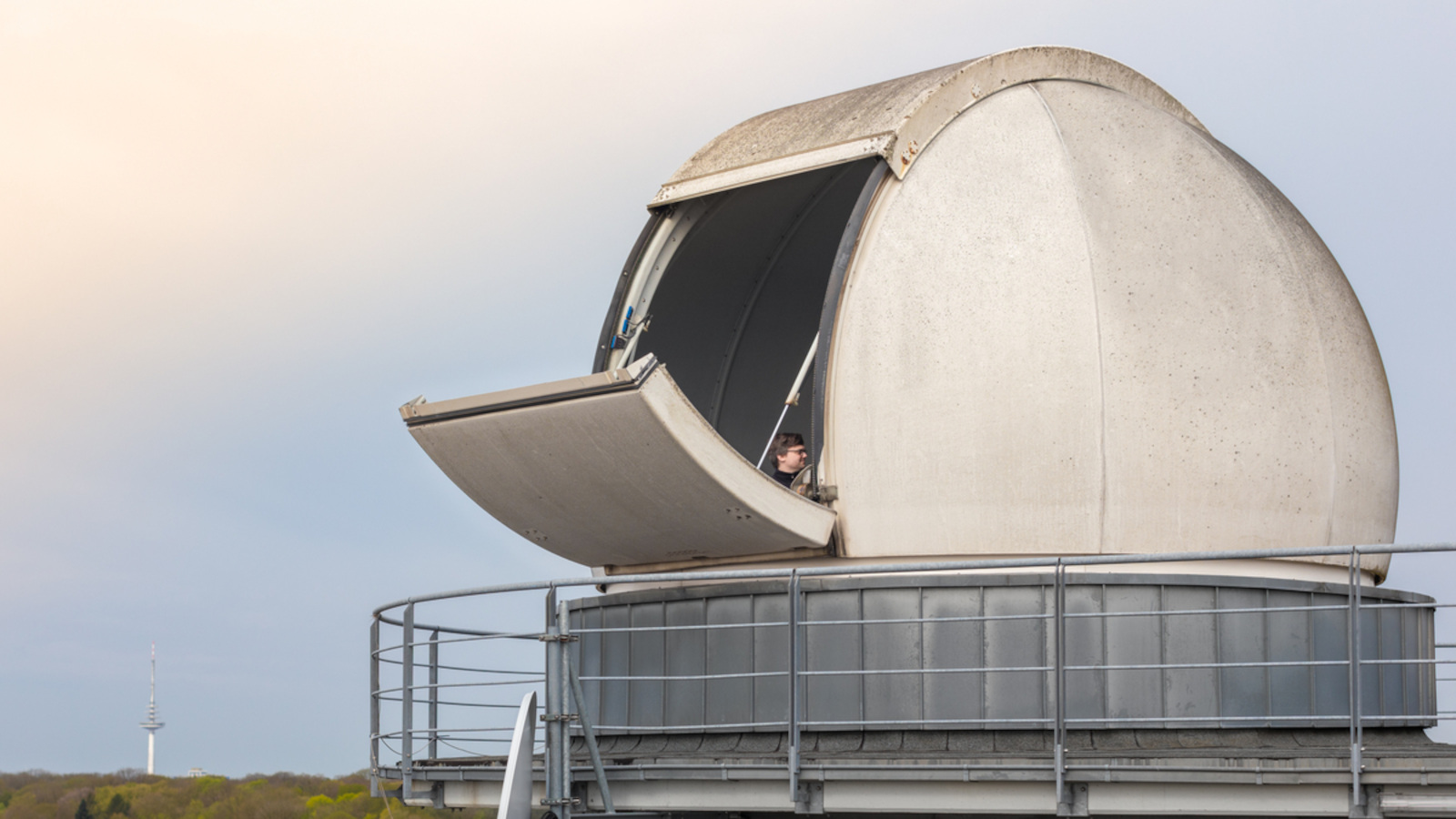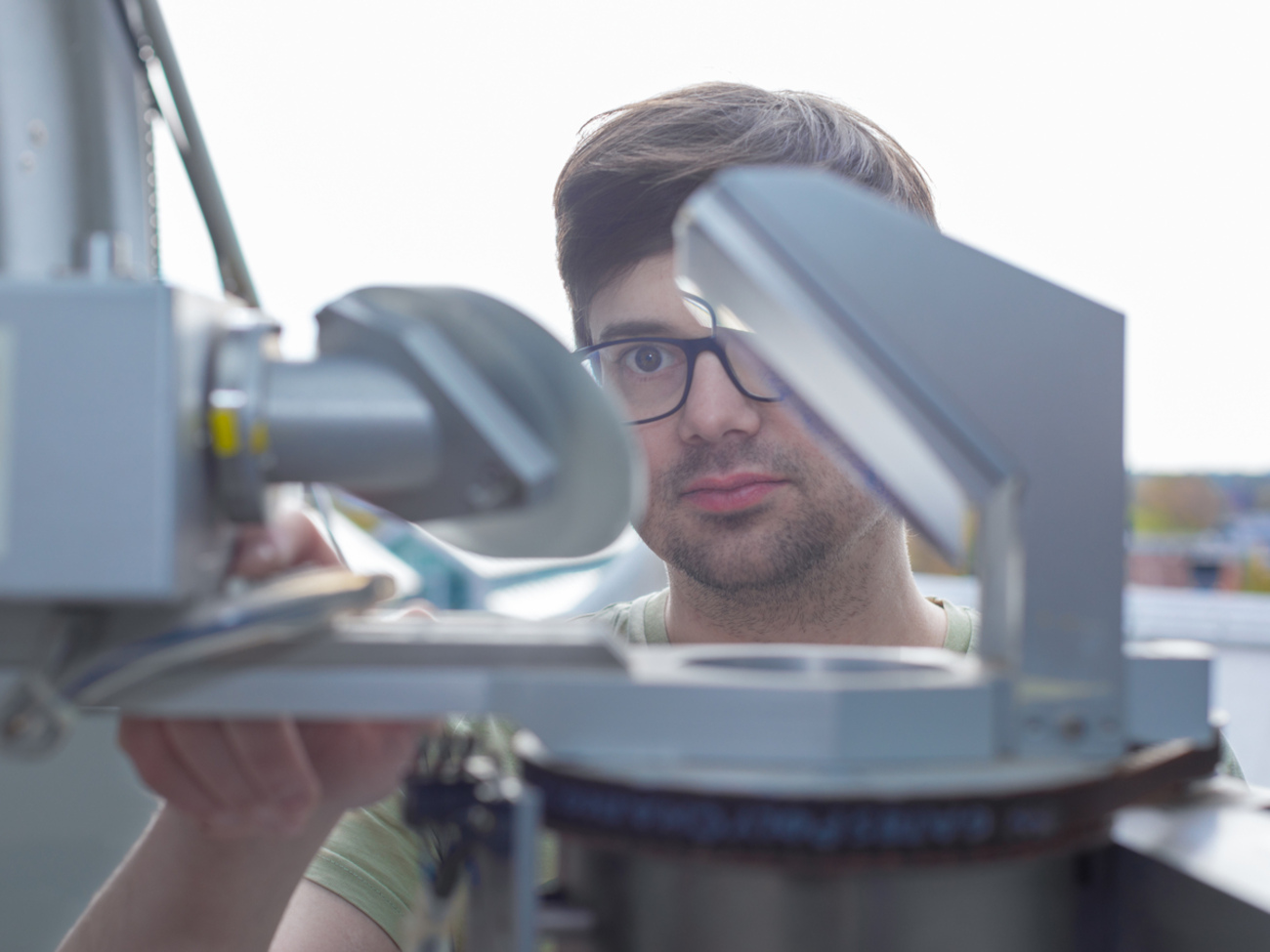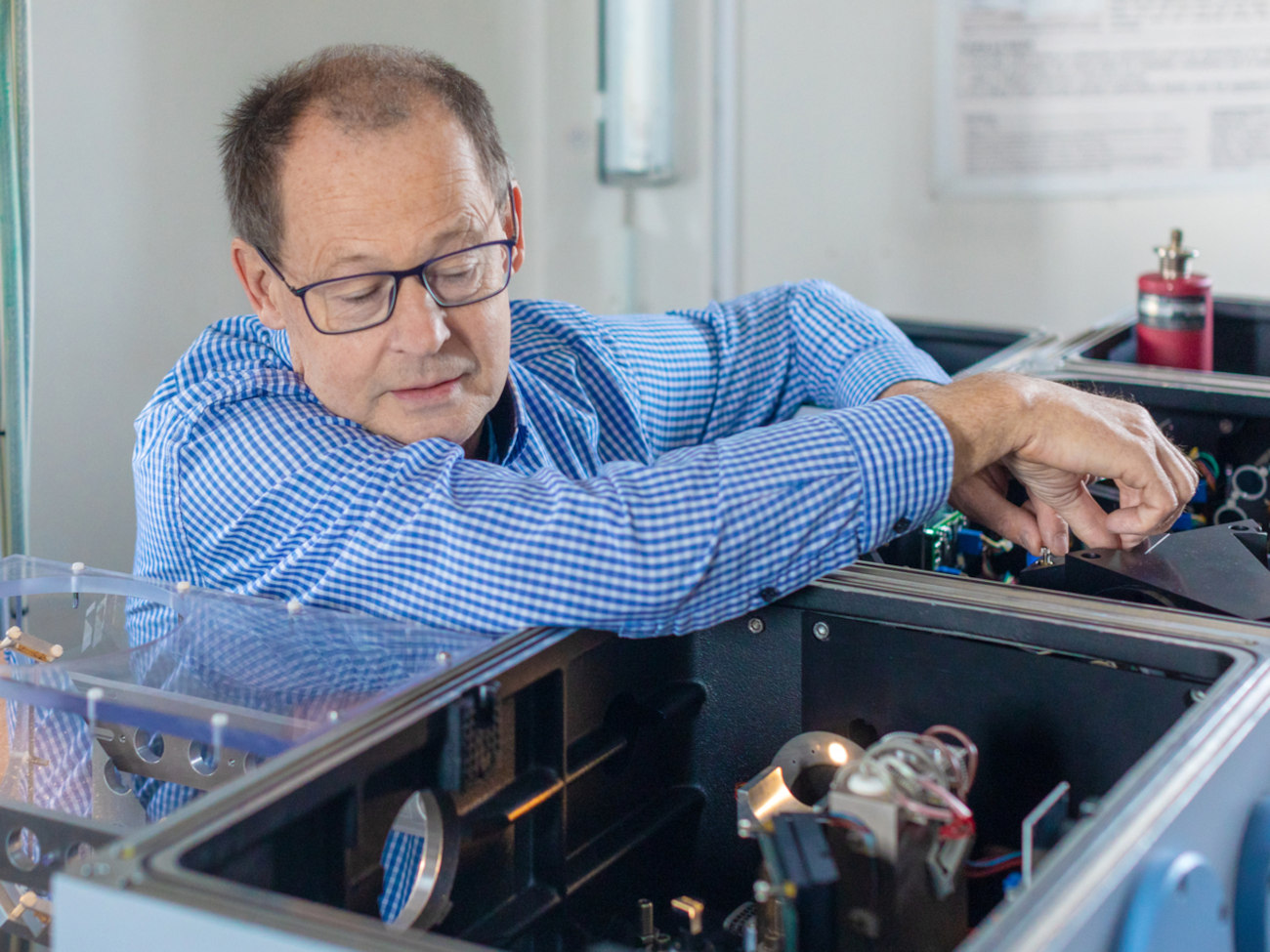
© Matej Meza / Universität Bremen
Have You Heard of...the Solar Tracker on NW 1 Building?
There is a lot to discover on campus. What’s behind all those doors? up2date. knocks on some of them to find out. Welcome to a campus tour with a difference!
The observant passer-by may have noticed the elegant white dome on the roof of NW1 Building (Natural Sciences 1) at Otto-Hahn-Allee. What goes on there? Does it house a planetarium, a telescope, or some other kind of mysterious astronomical gadget?
“Nothing really spectacular at all,” says Prof. Justus Notholt, head of the “Remote Earth Sensing” research group at the Institute for Environmental Physics IUP, as he is leading the way onto a rooftop terrace with a breathtaking view over Bremen. We then proceed up a narrow spiral staircase. He presses a button, and a hatch door opens in the dome, rather like a UFO after landing. The (sun)light spills in, or what counts as such on this misty Bremen day. Another touch of a button and the dome begins to turn on its axis before resting at the desired angle towards the sun.

© Matej Meza / Universität Bremen
Playing Ping-Pong with Rays of Light
This is where the environmental physicist captures the sun’s rays. The device with its two mirrors inside the dome is called a solar tracker. It was constructed in the mechanical workshop by the institute’s own technicians. “We spent ages fiddling around, adjusting the motors and mirrors,” says Notholt. They play a sort of ping-pong with the light beam before it is directed through a tube one level lower into the Fourier Transform Infrared Spectrometer (FTIR). This spectrometer is not a home-made affair and has to be purchased.
Other than other spectrometers, the Michelson interferometer is not equipped with a prism or grid, but works on a different principle. Once it enters the angular gray box of the spectrometer, the beam of light is split up. A total number of seven mirrors is needed to achieve the physical effect. One of these moves about agitatedly as though waiting for a starting signal; it then comes to rest, before suddenly shooting backwards and forwards on its rail. The device must be constantly purged with dry air. The detectors are filled with liquid nitrogen and thus cooled to minus196 °C. To ensure this runs smoothly and that the solar tracker is correctly adjusted, Notholt’s research assistants have “dome duty.” In the future, however, this process is to be automated.

© Matej Meza / Universität Bremen
Molecules Leave Fingerprints
The spectrum is then depicted as a graphical curve on a computer display. This curve would be flat, if not for the fact that some of the sunlight is absorbed by the atmosphere. This causes ‘fissures’ to appear, producing a veritable staccato of lines – somewhat like an etching. “Every molecule leaves its fingerprint in the spectrum. Here we can see the CO2,” explains the environmental physicist. In this way, we can measure the occurrence of 30 different trace gases. Besides the dome on top of NW1 Building, the “Remote Earth Sensing” working group operates additional spectrometers to measure trace gases and aerosols at other locations around the world. These, though, are housed in containers. One of them is located in Paramaribo, the capital of the South American Republic of Suriname; another in Bialystok, Poland. The collected data is then included in their calculations, together with those contributed by the research vessel ‘Polarstern’, which is run by the Alfred Wegener Institute in Bremerhaven, and from NyAlesund on Spitzbergen. The international networks which the Bremen institute also belongs to then feed the results into large-scale data bases so that the information can be made available to other researchers at universities and research institutions around the world.
Experiment with an Uncertain Outcome
What can be learned from these measurements? In the course of the Earth’s history, over the past 500,000 years the CO2 concentration in the air increased by about 1 to 2 ppm (parts per million) every 200 years: it is now increasing at an annual rate of 1 ppm. “That is 100-200 times faster than anything we have seen in the past. No doubt about it: We are currently experimenting with our Earth’s system, and the outcome is totally unknown,” says Notholt. And he calls that “nothing really spectacular!”